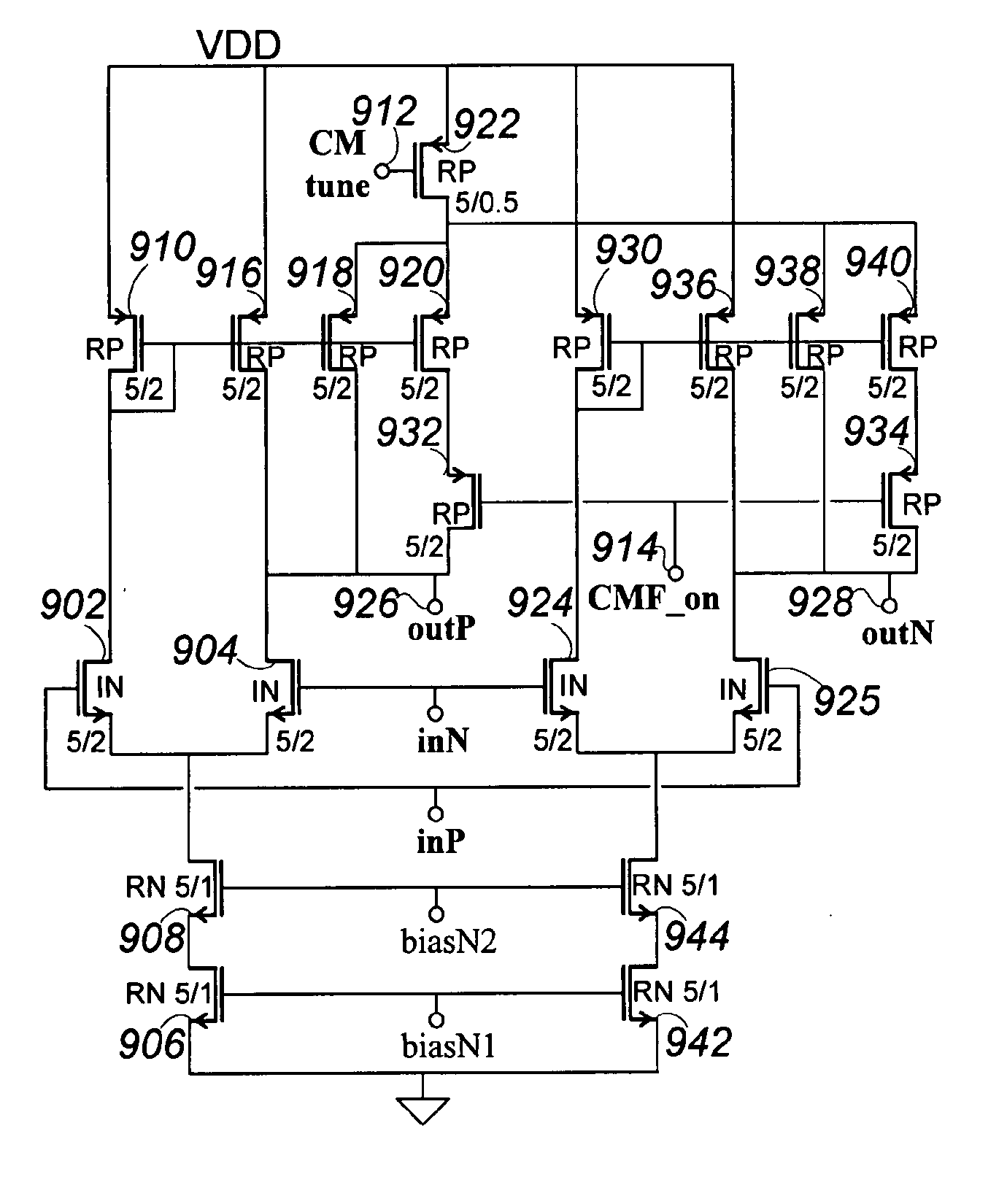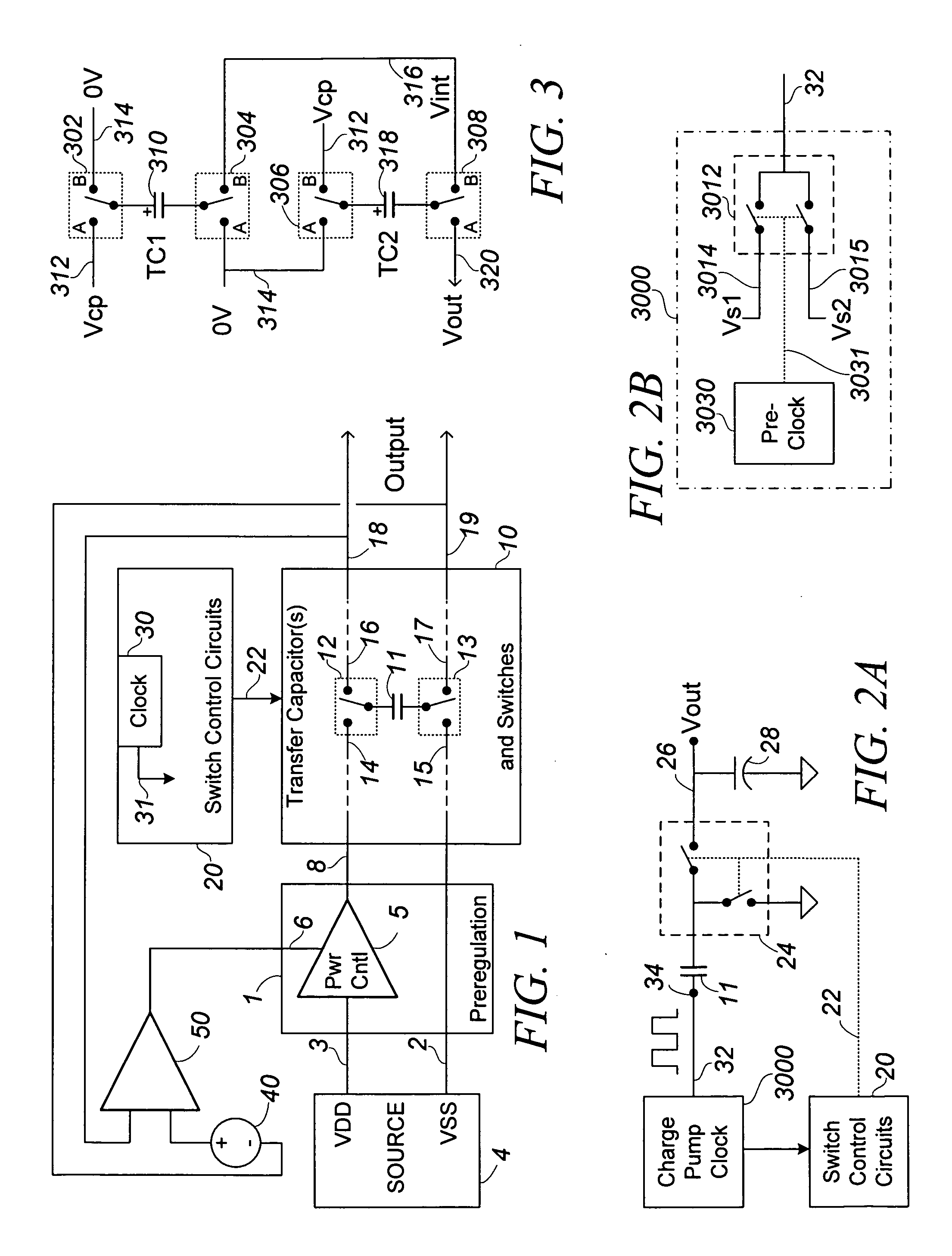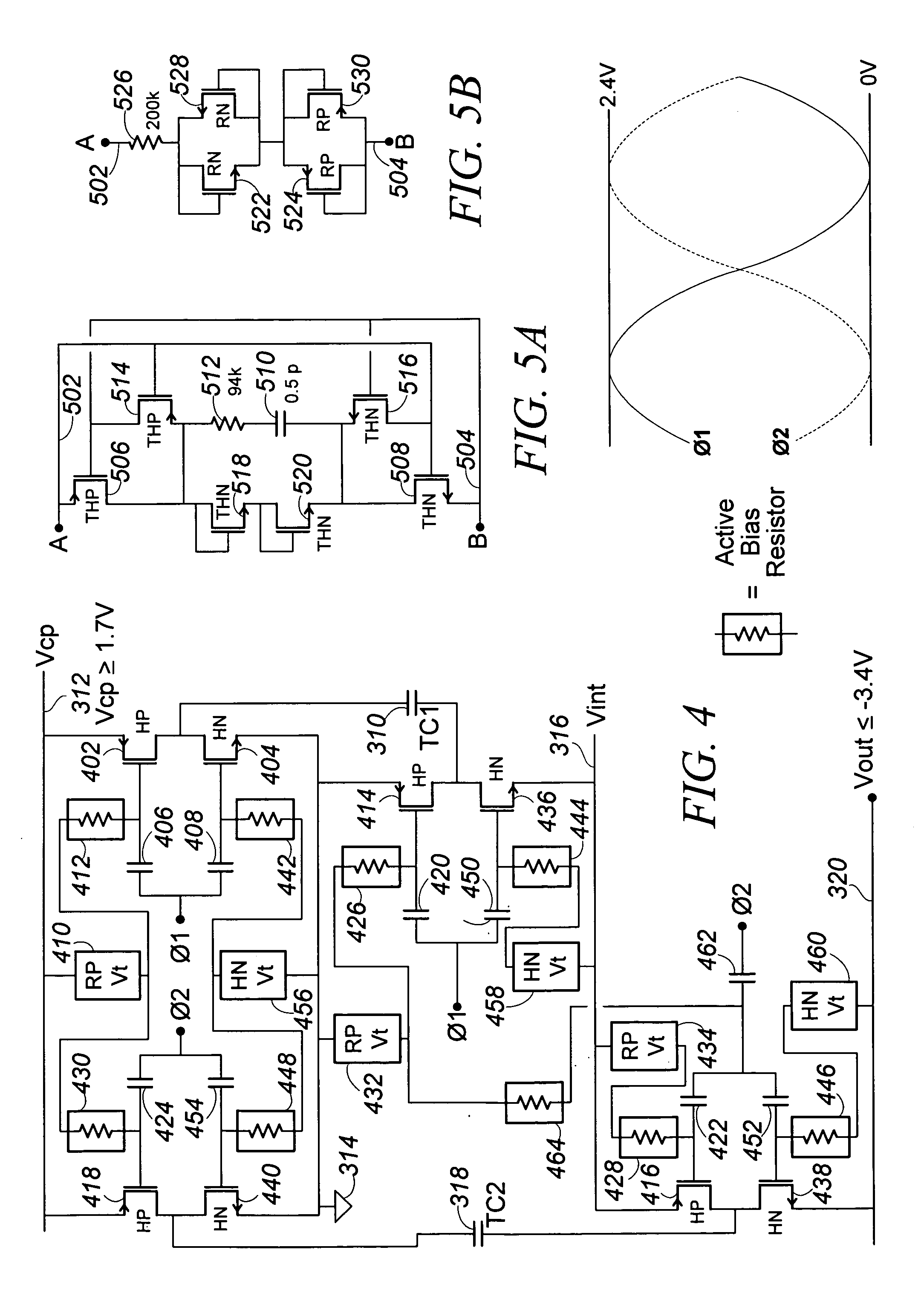Low-Noise High Efficiency Bias Generation Circuits and Method
a bias generation and low-noise technology, applied in the field of electronic integrated circuits, can solve the problems of undesired emissions, inconvenient supply of additional supplies, and long coupling between conductors such external supplies and the i
- Summary
- Abstract
- Description
- Claims
- Application Information
AI Technical Summary
Benefits of technology
Problems solved by technology
Method used
Image
Examples
Embodiment Construction
[0036]The bias generation circuits described herein are fabricated on integrated circuits, providing bias and other supply voltages. A bias generation method or apparatus may employ one or more charge pumps to develop bias voltages. Charge pumps, as that term is used herein, are defined by a process of storing charge from an input supply on a transfer capacitor, then switching the nodes to which the transfer capacitor is coupled so as to transfer some portion of that stored charge to an output supply. The charge pumps described are expected to be entirely within a single monolithic integrated circuit, except perhaps for filtering components such as external capacitors.
[0037]As was developed in the related U.S. patent application Ser. No. 10 / 658,154 filed Sep. 8, 2003, entitled “Low Noise Charge Pump Method and Apparatus” and incorporated herein by reference, a sinusoidal or sine-like charge pump clock output can reduce harmonic noise generation by the charge pump, particularly if th...
PUM
 Login to View More
Login to View More Abstract
Description
Claims
Application Information
 Login to View More
Login to View More - R&D
- Intellectual Property
- Life Sciences
- Materials
- Tech Scout
- Unparalleled Data Quality
- Higher Quality Content
- 60% Fewer Hallucinations
Browse by: Latest US Patents, China's latest patents, Technical Efficacy Thesaurus, Application Domain, Technology Topic, Popular Technical Reports.
© 2025 PatSnap. All rights reserved.Legal|Privacy policy|Modern Slavery Act Transparency Statement|Sitemap|About US| Contact US: help@patsnap.com



